12 Pollinator Flowers to Attract Honey Bees to Your Garden

This post follows our research editorial guidelines.

As the morning light starts to trickle into my garden it’s easy to see why honey bees are attracted to certain types of flowers. Take Lavender for example, the tall spires of flowering clusters fill the air to overwhelm the senses. This not only creates an aromatic appeal for me but also tells bees and butterflies where to go.
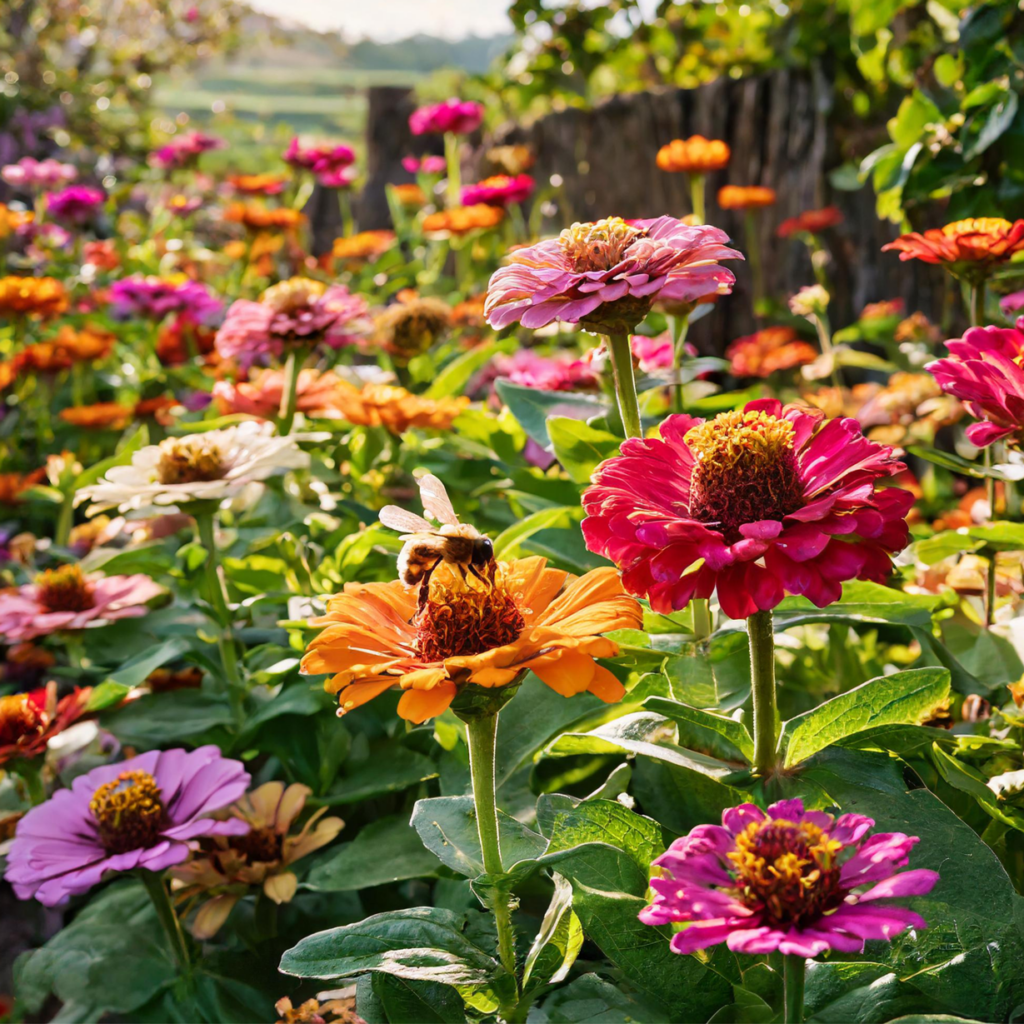
On the other end of the sensory expression, flowers like bee balm (fitting name, I know) display big, bright red blooms that act as a magnet to all sorts of pollinators including our prized honey bees. But those 2 are just a few of my favorite flowers to grow when welcoming these workers into my garden. Below you will find my complete and ever-updating list of flowers to grow when attracting pollinators to your garden.
Whether you’re planting pretty pink flowers or purple flowering weeds, these are all the best honey-bee-friendly plants I recommended adding to your garden:
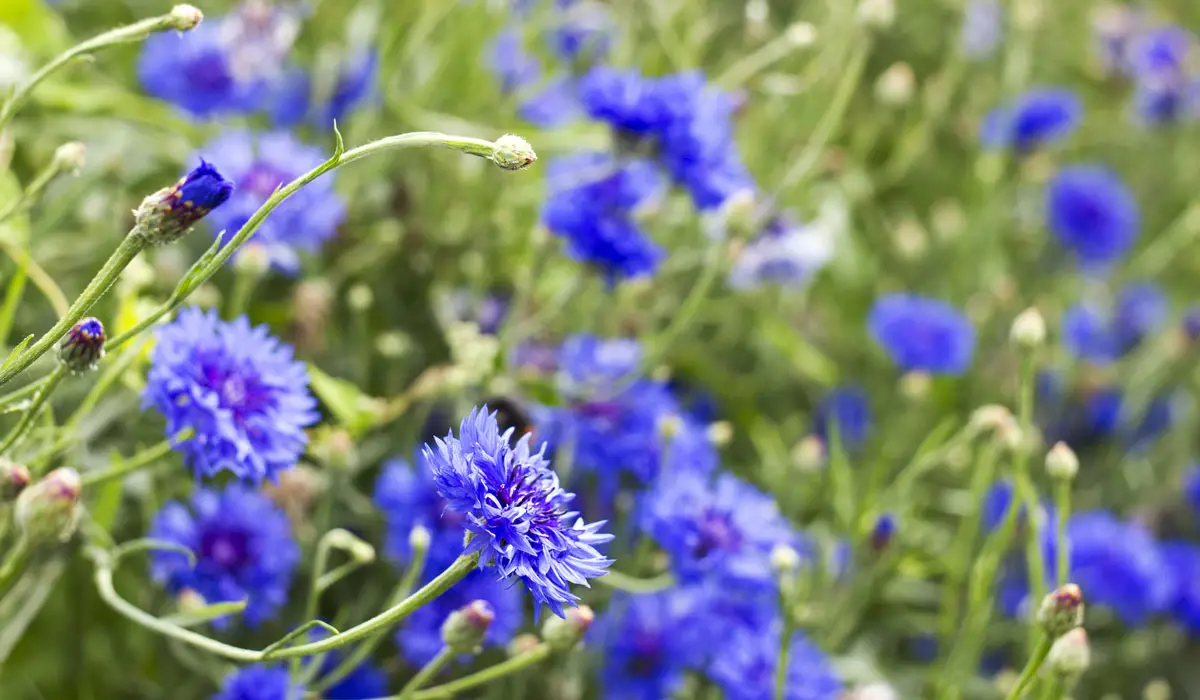
Quickly Find Flowers That Pollinators Love
1. Perennial Salvia (Salvia officinalis)

Perennial salvia is more commonly known as garden sage. These Mediterranean plants often feature green leaves and stems with purple flowers.
Garden sage is not only beautiful to look at but is often used in cooking dishes.
If you’re interested in growing your own purple perennials, this plant is easy to grow and maintain with its full sun requirements and drought tolerance.
| Botanical Name: | Salvia officinalis |
| Growth Rate: | 1-2’ tall, 2-3’wide |
| Native Range: | Northern Mediterranean |
| Hardiness Zones: | 4-10 |
| Soil Needs: | Moist but well-draining soil |
| Exposure: | Full sun |
| Blooming Period: | Early summer |
| Water needs: | Water once every 1-2 weeks. If top half in of soil is dry, time to water |
2. Lavender (Lavandula)

Who doesn’t love the sweet aroma of lavender? This soothing plant is a welcome addition to any pollinator garden with its purple flowers providing just the right touch of color you’re looking for.
Lavender plants are easy to maintain, needing only minimal water and full sun exposure. Just keep this one out of the reach of your pets, as it can be harmful to both dogs and cats. If you’re worried about the dangers of keeping Lavender around, try adding one of these plants that look like lavender to your greenhouse or garden.
| Botanical Name: | Lavendula |
| Growth Rate: | 1-2’ tall and 1-2’ wide |
| Native Range: | Cape Verde, Canary Islands, Europe, Africa, Mediterranean, and India |
| Hardiness Zones: | 5-11 |
| Soil Needs: | Dry, well-draining soil |
| Exposure: | Full sun |
| Blooming Period: | Summer |
| Water needs: | Water once a week until the flowers are cut or harvested |
3. Bee balm (Monarda didyma)

This beautiful red flower with a sweet minty fragrance provides a pop of color to any garden it’s added to.
My Pollinator top pick🐝
As the name suggests, Bee Balm will work as a magnet to attract honey bees to your garden. The large flowers are also incredibly attractive to hummingbirds and butterflies looking to have a rest while they feed.
Bee balm can often be found along stream banks and moist, wooded areas. They also happen to be very easy to maintain. Next time you’re near bee balm try crushing a few leaves to release the complex minty aroma, it’s part of the mint family after all.
| Botanical Name: | Monarda didyma |
| Growth Rate: | 2-4’ tall and 2-3’ wide |
| Native Range: | Canada and the northern U.S. |
| Hardiness Zones: | 4-9 |
| Soil Needs: | Prefers moist, well-draining soil |
| Exposure: | Full sun or partial sun |
| Blooming Period: | Mid-summer to fall |
| Water needs: | Every 7 to 10 days; soak to a depth of 6 to 8 inches |
4. Joe-pye weed (Eutrochium purpureum)
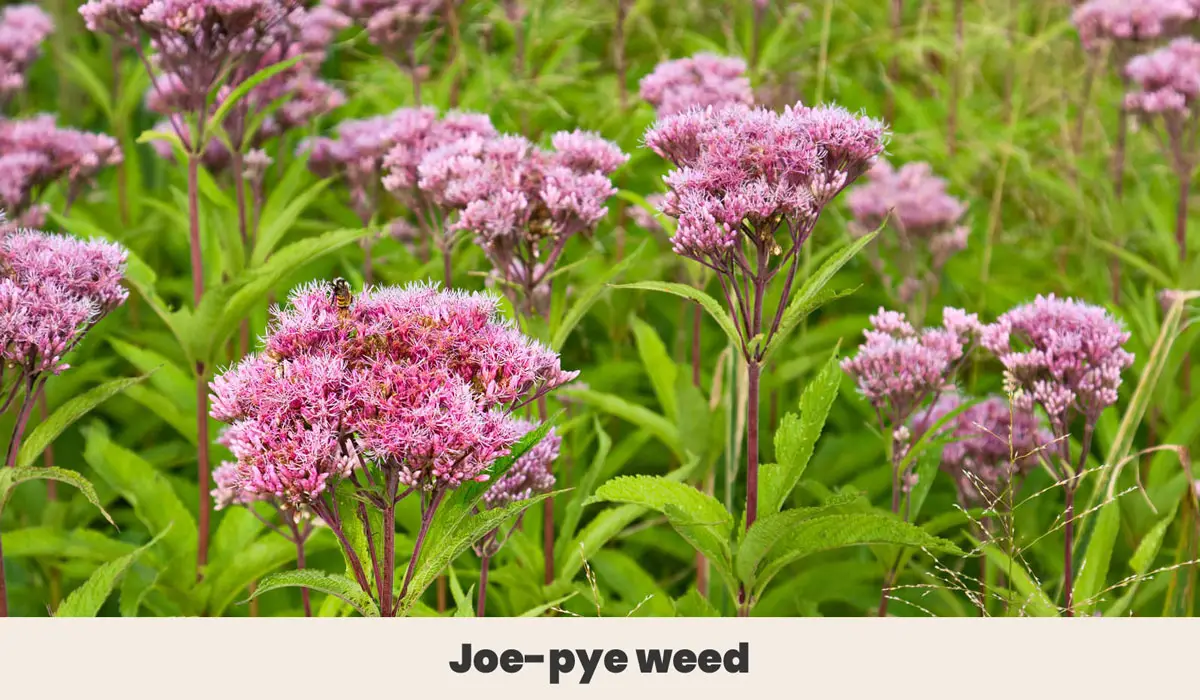
I love growing native flowers in my garden and it’s a win-win when blooms are as big as the Joe-pye Weed. Its vanilla-scented pink flowers will easily attract honey bees to your garden.
This tall pink perennial will act as a flight conductor to bees and butterflies that are nearby. Just plant a cluster once and watch this weed take over.
| Botanical Name: | Eutrochium purpureum |
| Growth Rate: | 5-7’ tall and 2-4” wide |
| Native Range: | Canada and the Eastern U.S. |
| Hardiness Zones: | 3-9 |
| Soil Needs: | Moist but well-draining soil |
| Exposure: | Full sun and partial sun |
| Blooming Period: | August to September |
| Water needs: | Keep evenly moist soil at all times. |
5. Black-eyed Susan (Rudbeckia hirta)
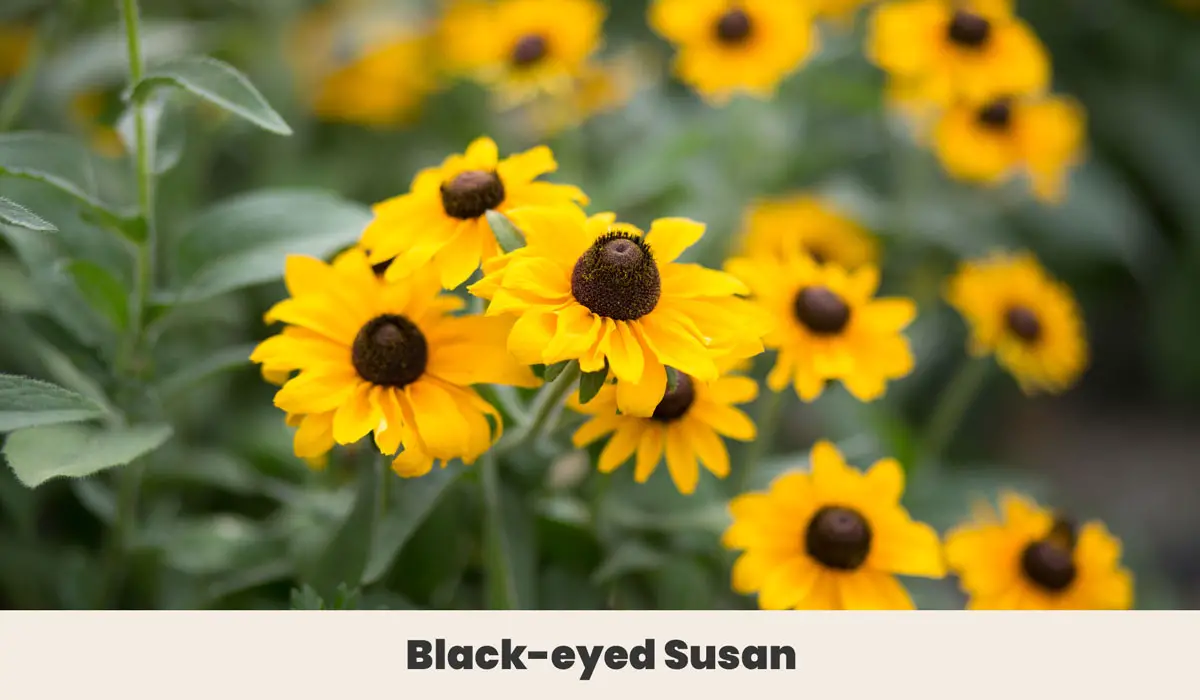
Black-eyed Susan’s are known for their golden or orange colors with dark brown cones.
They’re a prairie plant that occupies the eastern United States. With their vibrant colors, they will easily brighten up a summer day when in bloom. Plus, they look like daisies! These flowers are easy to grow and will stand out in any garden.
| Botanical Name: | Rudbeckia hirta |
| Growth Rate: | 1-3’ tall |
| Native Range: | Eastern U.S. |
| Hardiness Zones: | 3-9 |
| Soil Needs: | Moist, well-draining soil |
| Exposure: | Full sun |
| Blooming Period: | Summer |
| Water needs: | Water if the top inch of soil is dry |
6. Borage (Borago officinalis)

Borage is identifiable by its beautiful blue flowers. In fact, this unique-looking flower stands out for its shape and color. It’s also a pretty low-maintenance flower that does well in the summer months, as long as it has access to rich, well-draining soil.
I grow these in my garden not only for the bees but for myself to have a little snack now and again. Their flowers taste remarkably similar to cucumbers.
| Botanical Name: | Borago officinalis |
| Growth Rate: | 1-3’ tall, 9” – 2’ wide |
| Native Range: | Mediterranean |
| Hardiness Zones: | 2-11 |
| Soil Needs: | Well-draining soil |
| Exposure: | Full sun or partial sun |
| Blooming Period: | Summer |
| Water needs: | Water at least every few days once mature, allow soil to dry in between waterings. |
7. Sunflower (Helianthus)

Who doesn’t love a classic sunflower? This stunning flower can grow up to 10’ tall and is always a fan favorite among gardeners because of how easy it is to grow and maintain.
Sunflowers do best when planted in moist, well-draining soil and have access to full sun. In terms of sun exposure, they do best when exposed to at least six hours of full sun per day. There’s a reason why sunflowers are one of the most popular flowers available.
| Botanical Name: | Helianthus |
| Growth Rate: | 3-10’ tall and 1-3’ wide |
| Native Range: | Dry areas in North America |
| Hardiness Zones: | 2-11 |
| Soil Needs: | Moist, well-draining soil |
| Exposure: | Full sun |
| Blooming Period: | Late summer to early fall |
| Water needs: | Once a week until the top 6 inches of soil are moist |
8. Wallflower (Erysimum cheiri)

Wallflowers are the perfect addition to any rock garden. Commonly planted as flowers along garden borders, they love rich, very well-draining soil.
A big benefit of planting these orange perennials is that they commonly attract bees and butterflies, which is perfect for pollinating your garden.
| Botanical Name: | Erysimum cheiri |
| Growth Rate: | 6-30” tall |
| Native Range: | Southern Europe |
| Hardiness Zones: | 7 |
| Soil Needs: | Extremely well-draining soil |
| Exposure: | Full sun |
| Blooming Period: | Late spring to early summer |
| Water needs: | Water when the soil has completely dried out |
9. Lenten Rose (Hellebores)
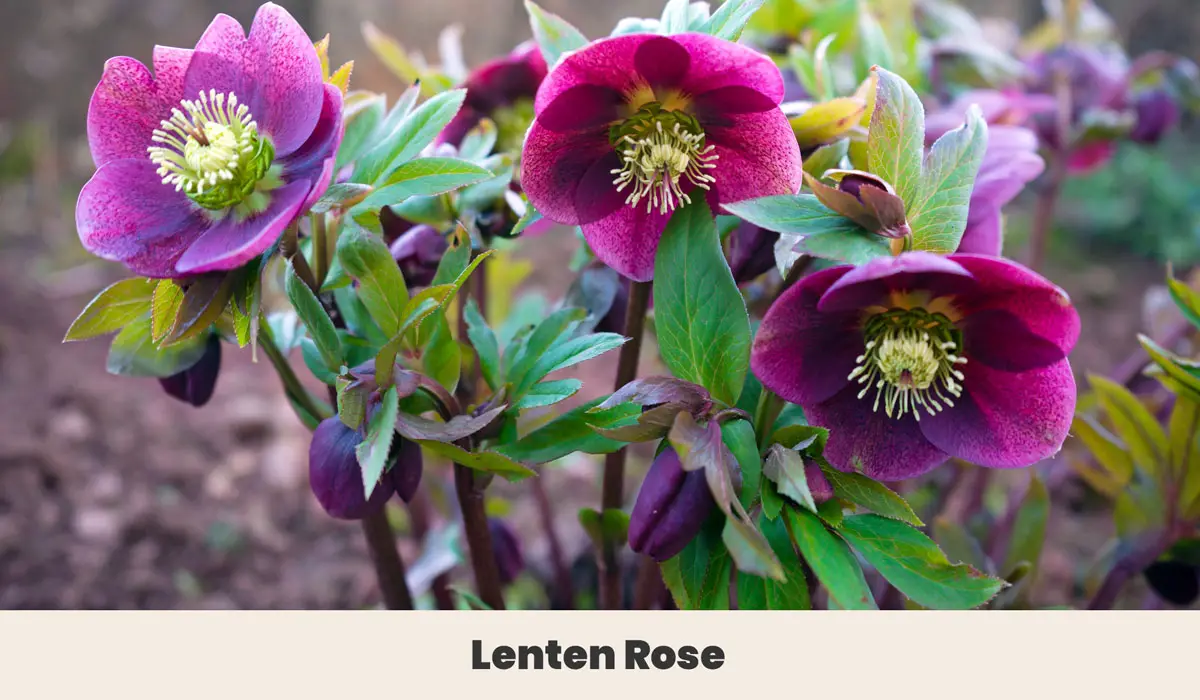
A Lenton Rose yields some of the prettiest flowers you’ll ever see! The blooms are usually a reddish-purple hue, but they can also be green, white, yellow, and blue.
The big benefit of planting lenten roses in your garden is that they tolerate different weather conditions, from being in total shade to being exposed to full sun.
“All parts of hellebores are toxic when ingested, so exercise caution and keep children and pets away…to prevent problems, wear gloves when handling this plant.”
Carolyn Black, a Master Gardener with PennState Extension School
This, along with their blooming period in the winter, makes them incredibly versatile.
Though it’s incredibly easy to grow and care for, it’s important that you take proper precautions when handling a Lenten Rose.
| Botanical Name: | Hellebores |
| Growth Rate: | 12” tall and 24” wide |
| Native Range: | Asia and Europe |
| Hardiness Zones: | 4-5 |
| Soil Needs: | Rich, organic soil |
| Exposure: | Full sun and full shade |
| Blooming Period: | Late fall – early spring |
| Water needs: | Once plant is established, only water during prolonged dry spells |
10. Heather (Calluna vulgaris)

The Calluna Vulgaris, which is commonly named Heather, is a gorgeous, tall pinkish-purple plant that brings immediate attention to your garden. In fact, they can grow up to 24” tall, making them a total showstopper.
Even though it can survive being planted in partial shade, your plant will bloom better when exposed to full sun. Best of all, this works great as ground cover if you want to add a little personality to your lawn instead of just having grass.
Heather is so hardy during droughts that it’s often referred to as a survivor plant. Once established this plant is drought tolerant and will bloom beyond most other ground covers.
| Botanical Name: | Calluna vulgaris |
| Growth Rate: | 24” tall |
| Native Range: | Morocco, Turkey, and Siberia |
| Hardiness Zones: | 5-7 |
| Soil Needs: | Well-draining soil |
| Exposure: | Partial shade and full sun |
| Blooming Period: | Late summer |
| Water needs: | Water 1-2 times a week until roots are established |
11. Zinnia (Zinnia elegans)

Zinnia adds the perfect pop of color to your garden! Coming in pink, red, and yellow, these flowers don’t really require a ton of maintenance outside of regular pruning.
It’s recommended that you trim your zinnia in early summer. If possible, try to prune as early in the day as possible to avoid doing so when the sun is at its brightest. Also, when it comes to water, be mindful of overwatering. If this gets too much water, it will fall victim to root rot.
Here’s everything you need to know about these flowers that bloom all summer:
| Botanical Name: | Zinnia elegans |
| Growth Rate: | Up to 18” tall |
| Native Range: | Mexico, Central America, and the Southwestern United States |
| Hardiness Zones: | 2-11 |
| Soil Needs: | Rich, well-draining soil that has a lot of organic matter |
| Exposure: | Full sun |
| Blooming Period: | Late spring through early fall |
| Water needs: | Apply water deeply so soil approx. 8” down is moist |
12. Bachelor’s Button (Centaurea cyanus)
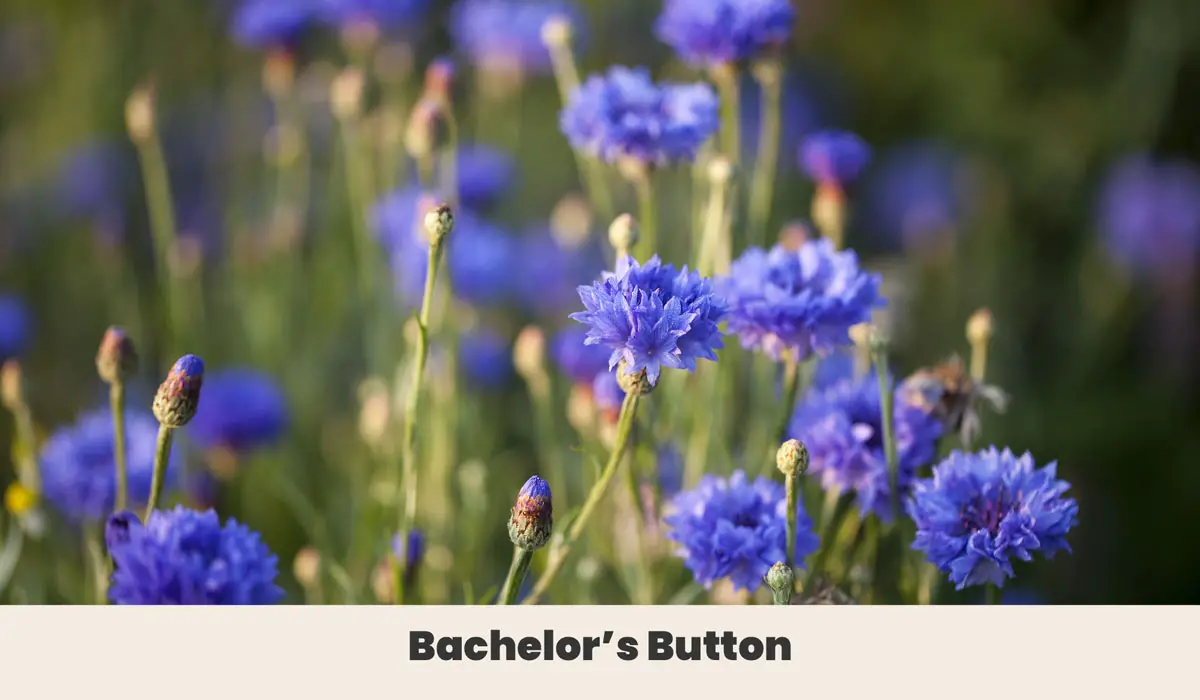
Bachelor’s button, also commonly known as cornflower is a bright blue flower that is simply gorgeous to look at! Best of all, they’re also relatively easy to care for, only needing pruning when the blossoms start wilting and only needing water when the top layer of soil is dry.
Be mindful of how much you’re watering this plant, though, because too much can lead to root rot. Here’s an overview of how to care for this eye-catching plant:
| Botanical Name: | Centaurea cyanus |
| Growth Rate: | 1-3’ tall and up to 2’ wide |
| Native Range: | Central America |
| Hardiness Zones: | 3-8 |
| Soil Needs: | Well-draining, sandy soil |
| Exposure: | Full sun |
| Blooming Period: | Early summer to late fall |
| Water needs: | Water when the top layer of soil is dry |
Final Thoughts
All of the plants mentioned here are great at attracting honey bees and other pollinators to your garden, who can help transfer pollen from plant to plant. This helps your whole garden thrive!
With this care guide, you can choose the best pollinator plants and keep them thriving all year round.

Before you go!
Growing Chocolate Cosmos: A Sweet Journey in Your Garden
11 Flowers that Look Like Hydrangeas For Your Spring Garden
11 Fall Blooming Perennials for Your Garden (Fall Flowers Perfect For Autumn)
11 Flowering Plants for a Small Beautiful Balcony